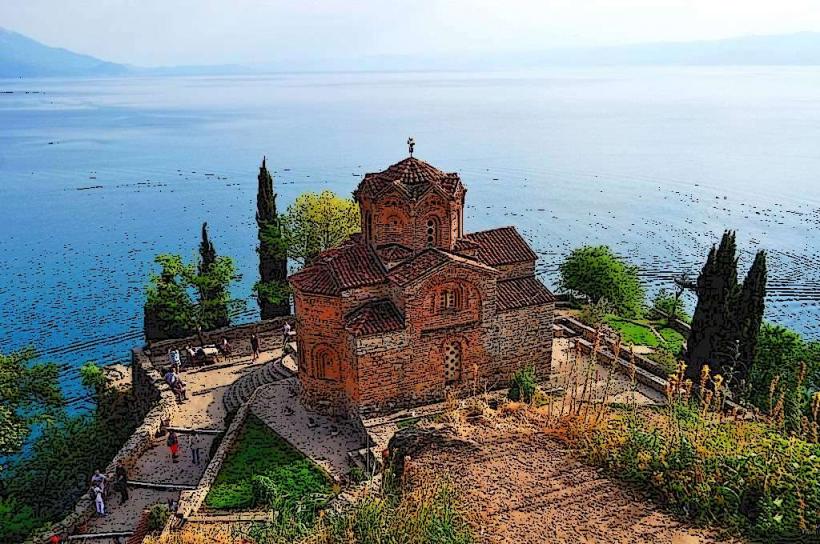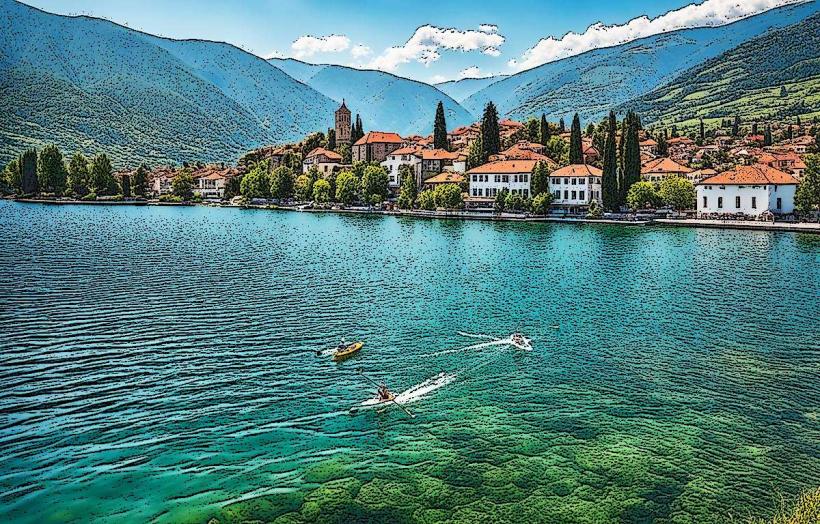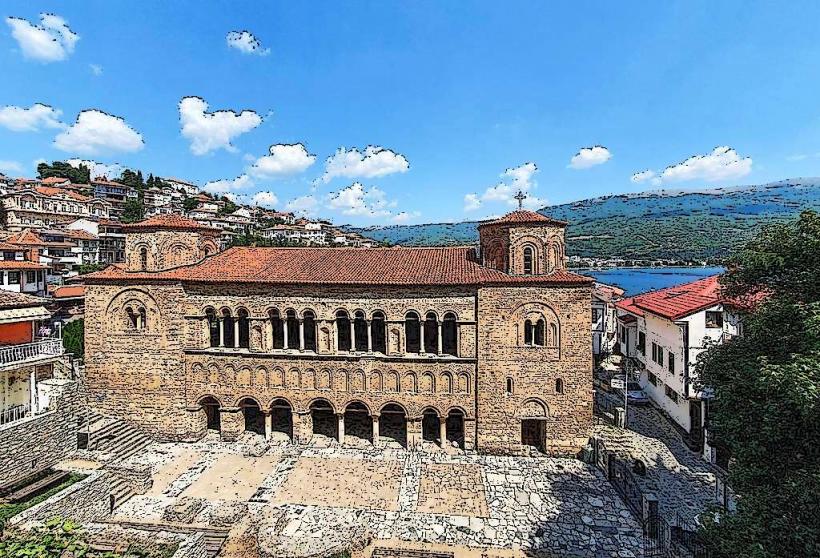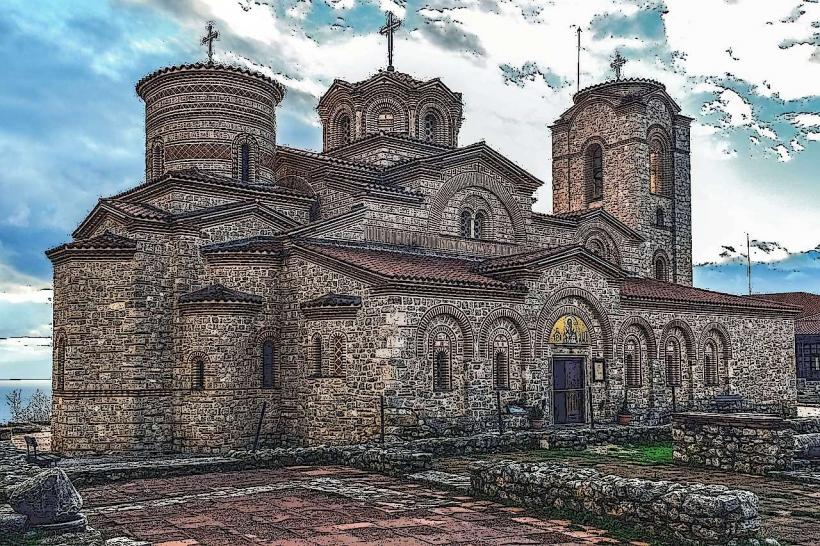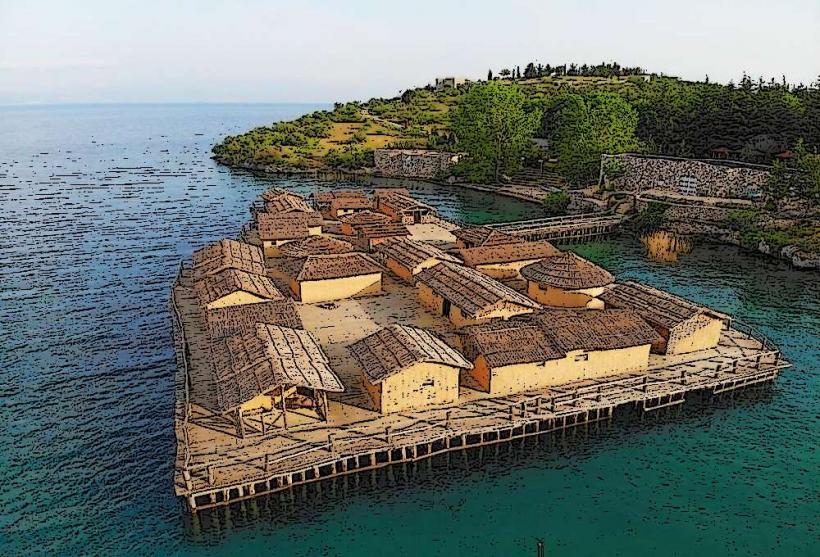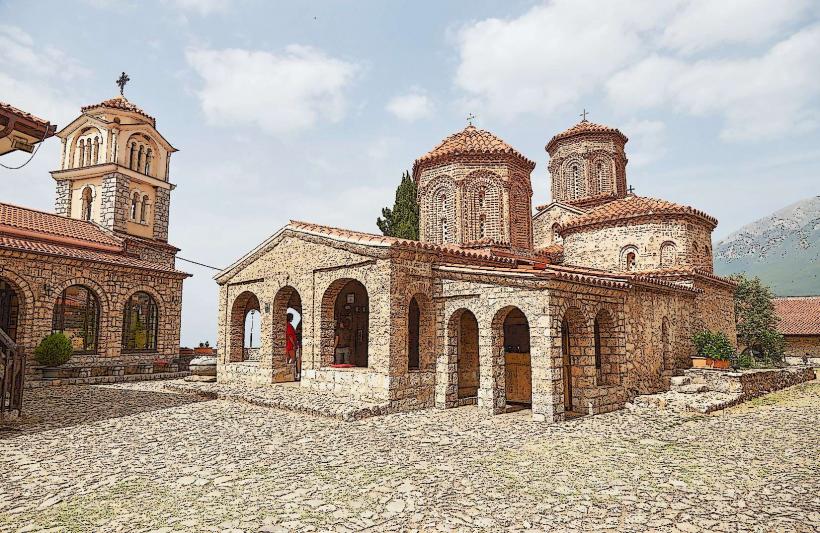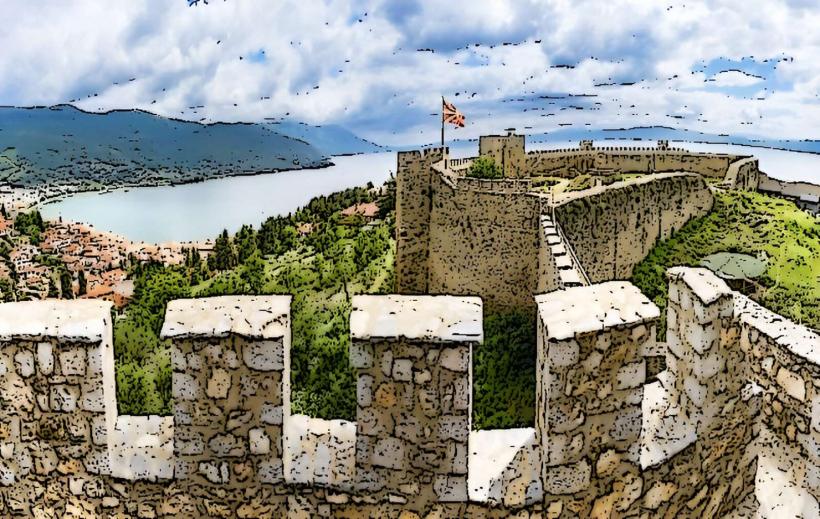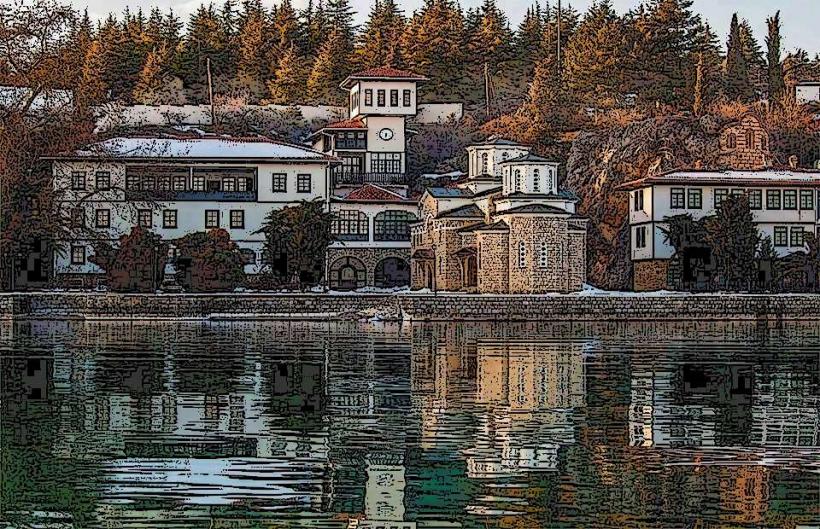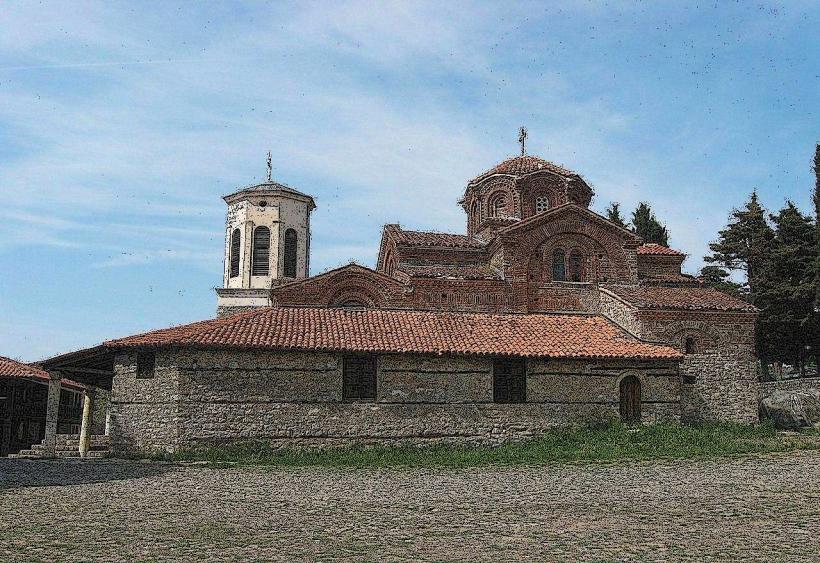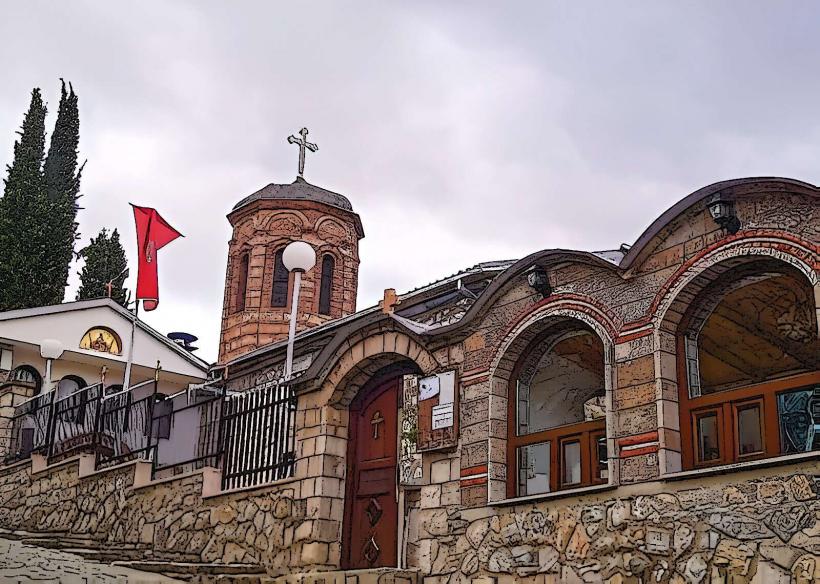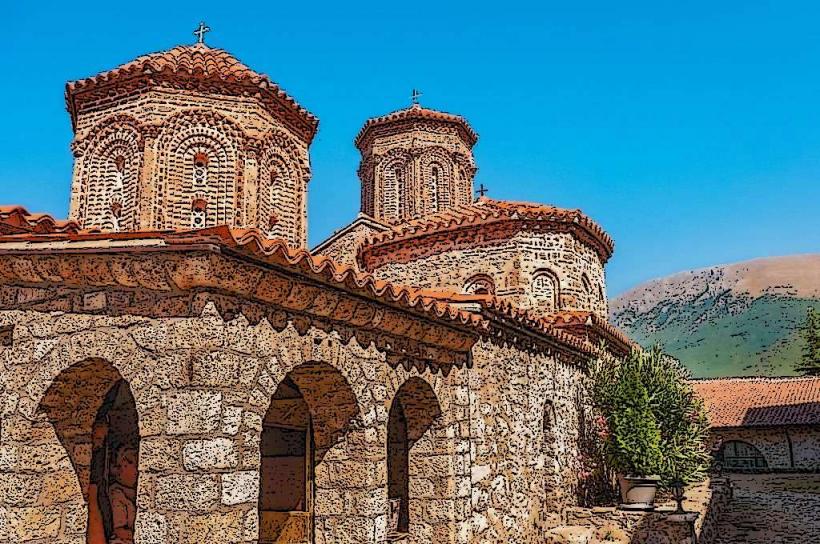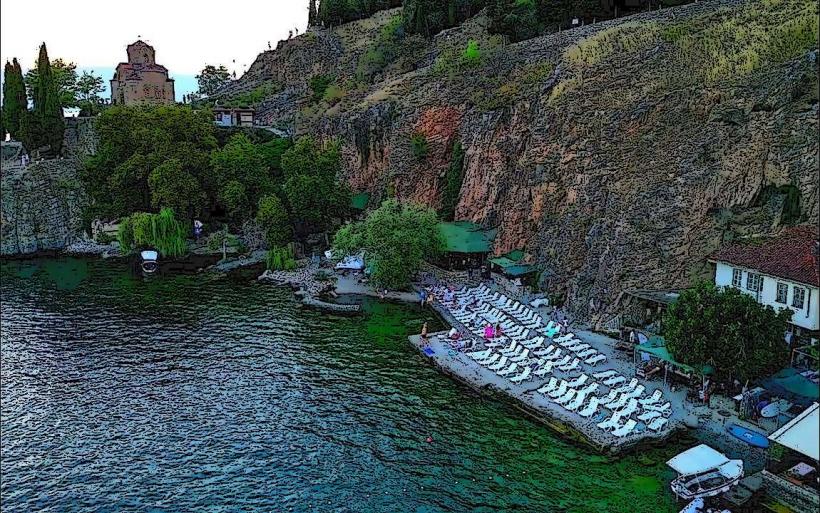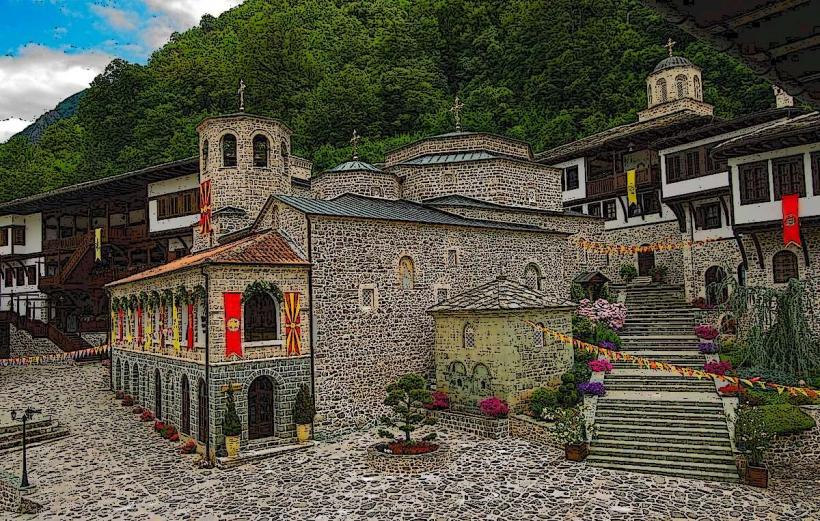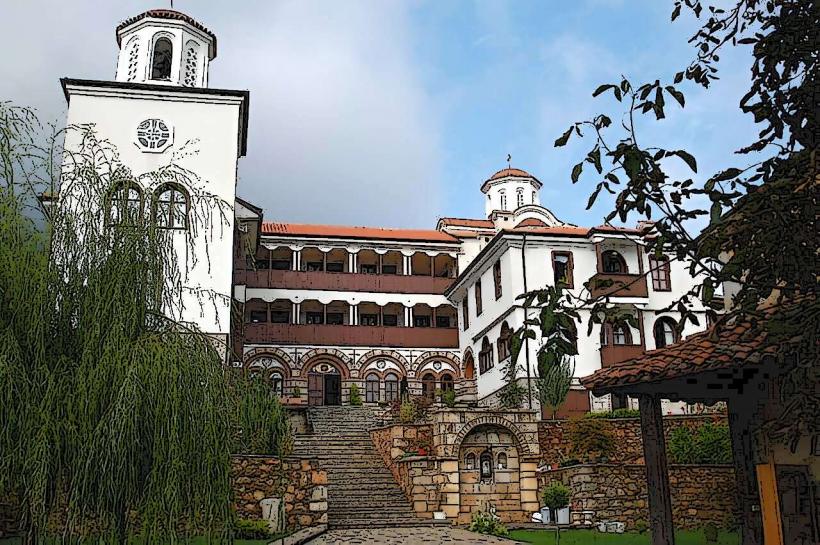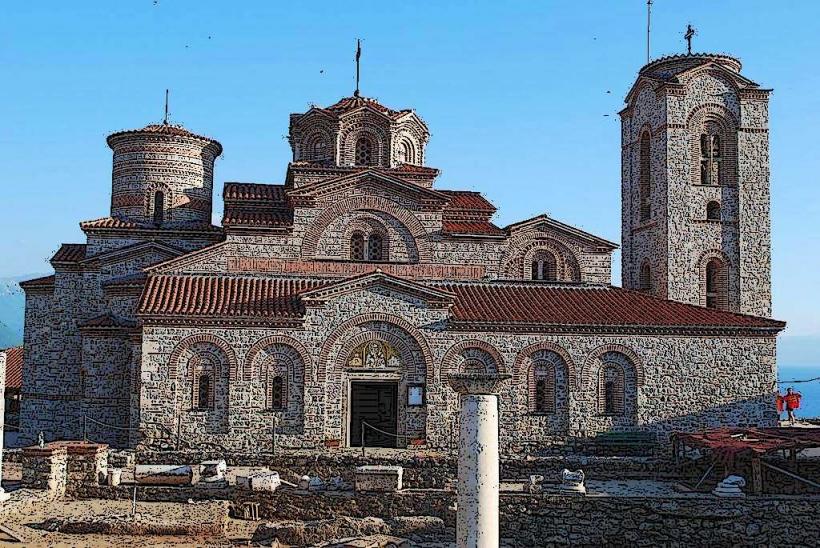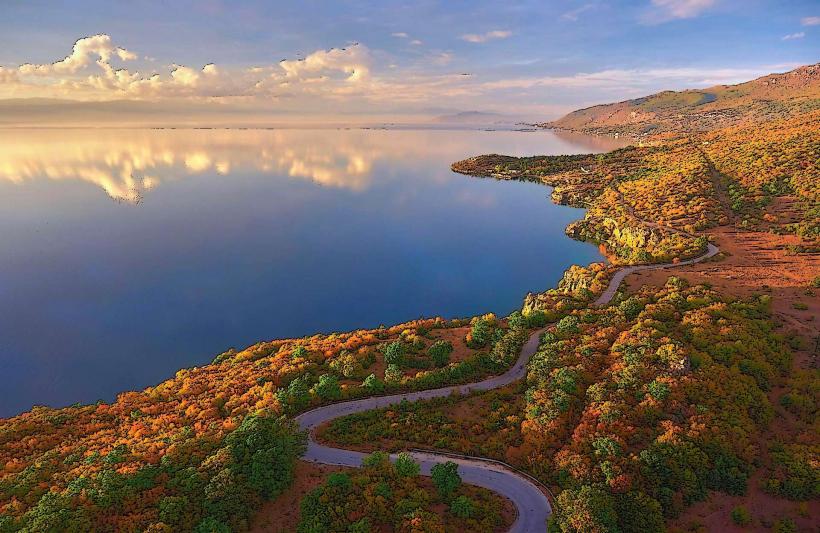Information
Landmark: Ohrid Fortress (Kale)City: Ohrid
Country: North Macedonia
Continent: Europe
The Ohrid Fortress, also known as Kale Fortress, is one of the most prominent historical landmarks in Ohrid, North Macedonia. It stands on the hill overlooking the town of Ohrid and offers panoramic views of the city and Lake Ohrid, making it not only a historical site but also a scenic location.
Overview
- Location: The fortress is situated on the Kale Hill, which rises approximately 100 meters above Lake Ohrid, in the city of Ohrid.
- History: The origins of the fortress date back to Antiquity, though much of the current structure was built during the medieval period. The fortress has served various purposes over the centuries, from defense to serving as a royal residence.
- Structure: The fortress complex includes a citadel, defensive walls, towers, and a main entrance gate. The walls are constructed with stone, and the layout is designed to maximize strategic defense, with a commanding view of the surrounding area.
Historical Significance
Ancient and Medieval Origins:
- The site of the fortress has been used for defense since ancient times, with evidence of earlier fortifications from the Hellenistic period. The ancient city of Lychnid (Ohrid's predecessor) was located near the fortress.
- The present structure of the fortress mainly dates back to the 11th century when the Byzantine Empire fortified it. Later, during the reign of the Kingdom of Duklja (12th century), the fortress was expanded.
Strategic Location:
- The fortress was strategically important as it provided control over the region, particularly due to its location above Lake Ohrid, one of Europe’s oldest and deepest lakes. Its position allowed for surveillance and defense against potential invaders from both land and water.
Byzantine and Ottoman Influence:
- Throughout the Byzantine and Ottoman periods, the fortress was an important military stronghold. It played a role in defending the region from both the Ottoman Empire and various other invaders.
- During the Ottoman period, the fortress underwent several modifications to strengthen its defenses.
Cultural Importance:
- The fortress is also tied to the cultural development of Ohrid and the surrounding region. Ohrid was a key center of Slavic culture and Christianity in the Middle Ages, and the fortress was an important part of the city’s defenses during these formative years.
Architectural Features
Fortress Walls:
- The stone walls of the fortress are thick and well-preserved. They were designed to withstand attacks, with some sections of the walls reaching up to 7 meters in height.
- The walls enclose an area of approximately 3 hectares, which includes the citadel and several smaller structures within the fortress.
Towers and Gates:
- The fortress has several towers positioned along the walls, which were used for surveillance and defense.
- The main gate of the fortress is a large, arched entrance, which provides access to the interior. The gate is flanked by defensive walls and a small courtyard, which leads to the citadel.
Citadel:
- At the highest point of the fortress is the citadel, which would have served as a royal or military residence. The citadel is the most fortified section of the fortress and offers stunning views of Lake Ohrid and the surrounding area.
Church of St. Mary:
- Inside the fortress walls, there is a small church dedicated to St. Mary, which adds a spiritual element to the fortress’s military functions. This church, like many in Ohrid, is decorated with medieval frescoes.
Role in Modern Times
- Tourist Attraction: Today, the Ohrid Fortress is one of the top attractions in Ohrid and is visited by both tourists and locals. Its combination of historical significance, architectural beauty, and its panoramic views of Ohrid and Lake Ohrid make it a must-visit site.
- Cultural Heritage: The fortress is part of Ohrid's UNESCO World Heritage Site, which recognizes the city's cultural and historical importance. Ohrid is renowned for its ancient Christian heritage, its Byzantine architecture, and its role as a key cultural and religious center in the Balkans.
Conclusion
The Ohrid Fortress (Kale) is not just a historical monument; it is a symbol of the region's resilience, its strategic importance, and its rich cultural heritage. The fortress offers visitors a glimpse into the past, showcasing the fortifications, defensive structures, and historical layers that have shaped Ohrid over centuries. Its location, architecture, and historical significance make it an essential part of any visit to Ohrid, as it stands as a testament to the city’s storied history and its role in the broader narrative of the Balkans.


